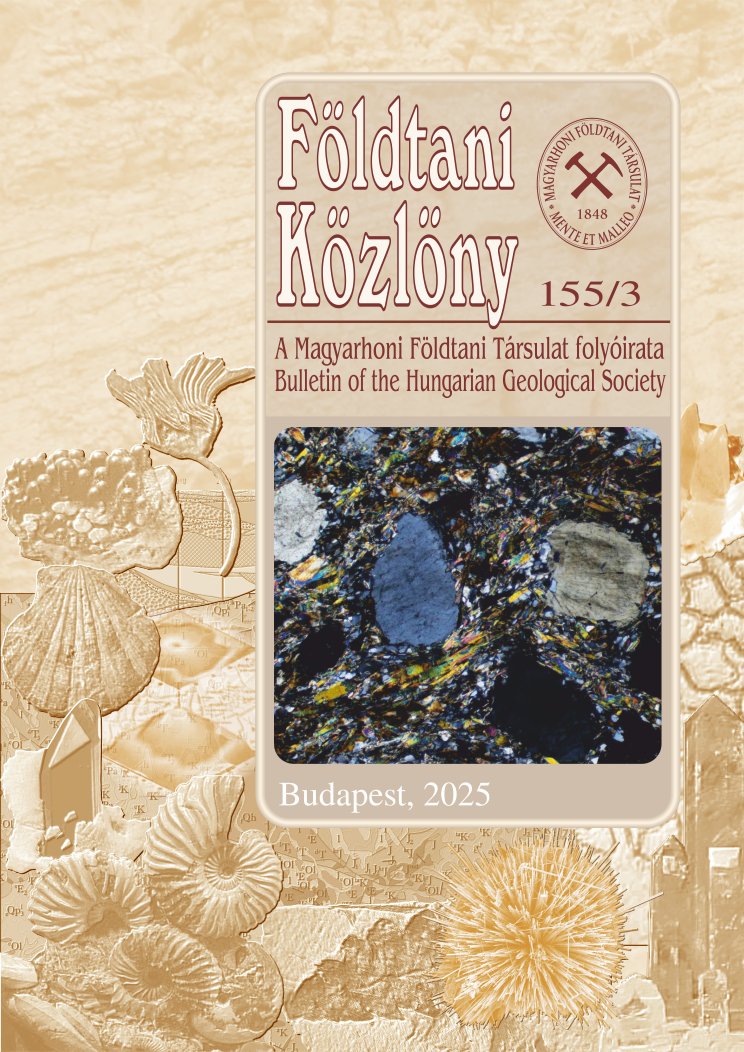Digital image analysis method for homogenous rocks, example of the Boda Claystone Formation in the borehole Ibafa Ib–4
Abstract
A tanulmányban egy új színelemzési módszert mutatunk be, melynek alkalmazhatóságát az Ibafa Ib–4 úrás által
harántolt Bodai Agyagkő rétegsorában vizsgáltuk. A nagy aktivitású radioaktív hulladékok egyik potenciális befogadó
kőzetének a Nyugati-Mecsek jellemző képződményét, a Bodai Agyagkövet tartják. Az ország legegyhangúbbnak tartott
képződményét (JÁMBOR 1964) döntően homokkő, (albitos) kőzetlisztes agyagkő, (albitos) agyagos aleurolit és dolomit
építi fel. A képződmény színe a barna és vörös közötti számtalan finom átmenet bármelyike lehet, amelytől kissé eltérnek
a homokkő-betelepülések világosabb árnyalatai, valamint a fehér dolomitbetelepülések. Ebből adódóan a BAF színének
kizárólag vizuális értelmezése pontatlanságokhoz vezethet. Azonban a kőzet színének kismértékű (akár ciklikus)
változása is jelentős földtani tartalmat hordoz.
A tanulmányban bemutatott GIS módszerünk segítségével a hasonló színeket és az azok közötti finom átmeneteket
nagy pontossággal el lehet különíteni. Ezért a módszert főleg olyan képződmények esetében érdemes alkalmazni,
amelyek színüket tekintve homogének, egyveretűek.
A vizsgálat során két módszert alkalmaztunk. Egyrészt a kőzet színe alapján sikerült ciklicitást kimutatnunk,
másrészt az egyes jellemző kőzettípusok szín alapján történő kategorizálását is elvégeztük. Ez utóbbi módszer
segítségével a makroszkóposan nehezen elkülöníthető kőzettípusokat osztályokba tudtuk sorolni. A természetes gammaelemzésével kapott ciklicitásértékek jó egyezést mutatnak a színelemzéssel nyert, valamint az „etalonnak” tekintett
fúrásdokumentáció szerint (kőzettan) megállapított ciklushosszakkal. Úgy gondoljuk, hogy az elért új eredmények a
hagyományos makroszkópos dokumentálást kiegészítik, hiszen a digitális feldolgozás segítségével a szubjektivitás
mértéke jelentősen csökkenhető.











